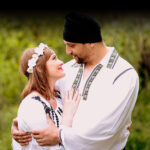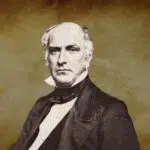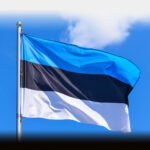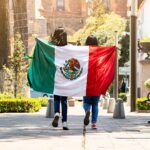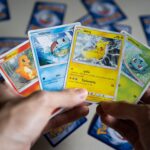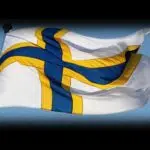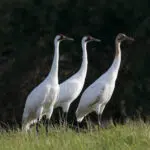Estonia Independence Day is a public holiday on February 24 each year. Independence Day is also Estonia’s national day that marks the anniversary of the Declaration founding the Republic of Estonia on this day in 1918. Estonia is a country in Northern Europe that borders the Baltic Sea and the Gulf of Finland. Home to more than 1,500 islands, Estonia’s diverse topography spans rocky beaches, old-growth forests, and many lakes. Tourists visit Estonia to see castles, churches, and hilltop fortresses. Estonia is home to some 1.3 million people. Estonians celebrate Independence Day with parades, concerts, and parties.
History of Estonia Independence Day
Announced from the balcony of the Endia Theatre in Parnu, the Manifesto to the Peoples of Estonia was declared on February 23, 1918. The historic moment was crowned by lusty singing as the crowd began to sing what later became Estonia’s national anthem — a song titled ‘Mu isamaa, mu onn ja room,’ meaning ‘My Fatherland, My Happiness, and Joy.’ The following day, February 24, the Manifesto was published after it arrived in Tallinn, the nation’s capital. Thus, the Republic of Estonia was born.
Estonia has faced many battles for its independence. Before the declaration in 1918, Soviet Russia controlled Estonia. However, once the Russians left and the Manifesto was read, Germany began a forced occupation until the end of World War I. Faced with defeat, the Germans were left with no choice but to return power to the Provisional Government on November 19. This triumph for the Estonians was short-lived as Soviet Russia once again swept in only nine days later on November 28, 1918, leading to the Estonian War of Independence.
The war eventually came to an end in February 1920 with the signing of the Tartu Peace Treaty, in which Soviet Russia promised never to lay claim to Estonia. This promise was broken in 1940 when they again invaded Estonia, forcing the government to surrender to Soviet rule during World War II. On August 6, 1940, Estonia became the Estonian S.S.R. In 1941, Estonia was recaptured once again by Germany. Later, the Soviets again took control of power.
In 1988, independence movements began by forming political parties and protests. Finally, on August 20, 1991, Estonia re-established its sovereignty after the peaceful Singing Revolution against Soviet rule. This was a unique revolution where music was used as a tool of resistance and a declaration of intent. Estonians start their Independence Day at sunrise with the traditional flag-hoisting on Toompea, a hill in the capital, Tallinn. This is followed by the military parade in Freedom Square, an open-air free concert in central Tallinn, and the President’s reception in the evening. Meanwhile, in other Estonian towns, the flag is hoisted at public and private spaces in the morning, which is followed by church services and attending local celebrations. The current flag of Estonia was adopted after independence from Russia in 1918.
Estonia Independence Day timeline
Humans begin settling in what is now known as Estonia.
The Manifesto to the Peoples of Estonia is declared in Parnu, Estonia.
The Tartu Peace Treaty is signed between Soviet Russia and Estonia.
Estonia is admitted to the League of Nations.
Estonia experiences an economic crisis due to a lack of technological differences.
The discovery of phosphorite mines triggers a ‘phosphorite war’ to protect the environment.
Common men and creative unions come together to fight Soviet powers.
Estonian politicians declare the nation’s independence during a coup attempt in Moscow.
Estonia Independence Day FAQs
Does Estonia have a President or a Prime Minister?
Estonia has both a President — Alar Kari and a Prime Minister — Juri Ratas.
Do people speak English in Estonia?
Yes. Estonia has a large number of people that speak English.
What is the population of Estonia?
Estonia is home to approximately 1.3 million people.
How do Estonians celebrate Independence Day?
Estonians start their Independence Day at sunrise with the traditional flag-hoisting on Toompea, a hill in the capital, Tallinn, and in other Estonian towns in the morning and progress through the day with church services, parades, parties, and concerts.
Is Estonia part of the E.U.?
Estonia has been a member country of the E.U. since May 1, 2004. The Estonians comprise 0.3% of the total E.U. population.
Estonia Independence Day Activities
Celebrate with Estonia
You may not be from Estonia but it’s a great day to show love to our Estonian brothers and sisters across the world. Write a goodwill message to all Estonians and share it across your social media platforms.
Learn an Estonian word
Languages are a connecting factor among people. Take a minute to learn at least one word in Estonian. You never know when you might need it.
Visit Estonia
If you can, book a vacation to Estonia. The country boasts some splendid fortresses, churches, and castles. If that is not possible, hit google and travel virtually.
5 Things You Didn't Know About Estonia
Public transport is free
Public transport is free for every Estonian in every town of the country.
Wife-carrying is a sport
In Estonia, a sport called ‘wife-carrying’ exists, where husbands must complete a race while holding their wives upside down on their backs!
Estonian is widely-spoken
Estonian, the language of Estonia, is the world’s second most-spoken Finnic language.
Old Town is very old
A place called Old Town in Tallinn is the most intact medieval town in all of Europe.
The least religious country in the world?
Only 16% of its population was found to be religious in a 2005 poll.
Why We Love Estonia Independence Day
The struggle for independence
Estonia’s journey towards independence was a long and tedious one. Their story teaches resilience and grit even in the face of fierce opposition.
Freedom from oppression
While under Soviet and German rule, Estonia faced brutal and oppressive regimes that led to the loss of many lives. Their historic independence brings a joyful end to a long and hard battle, proving that the people will always prevail.
Love for the nation
This special independence day is doubly glorious because of the fierce love Estonians displayed by being willing to fight for their freedom. Not only does it show perseverance, but it also shows love.
Estonia Independence Day dates
| Year | Date | Day |
|---|---|---|
| 2026 | February 24 | Tuesday |
| 2027 | February 24 | Wednesday |
| 2028 | February 24 | Thursday |
| 2029 | February 24 | Saturday |
| 2030 | February 24 | Sunday |


